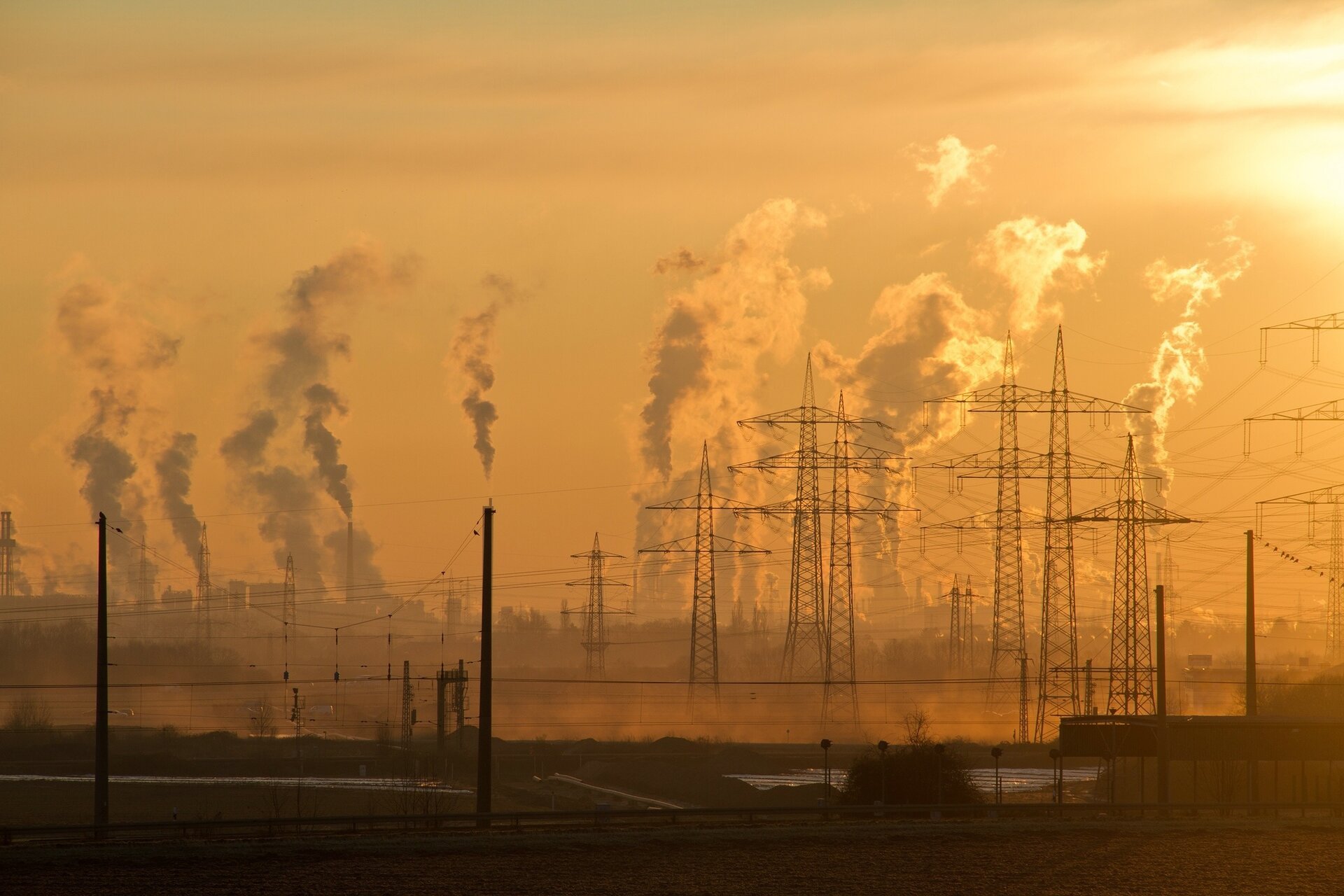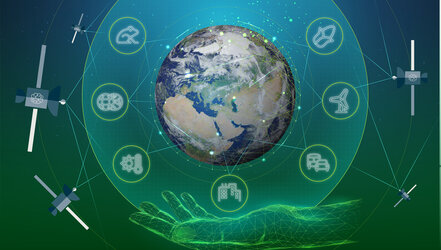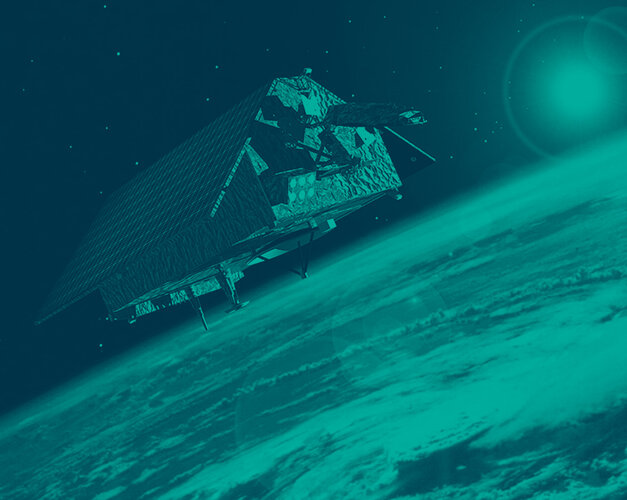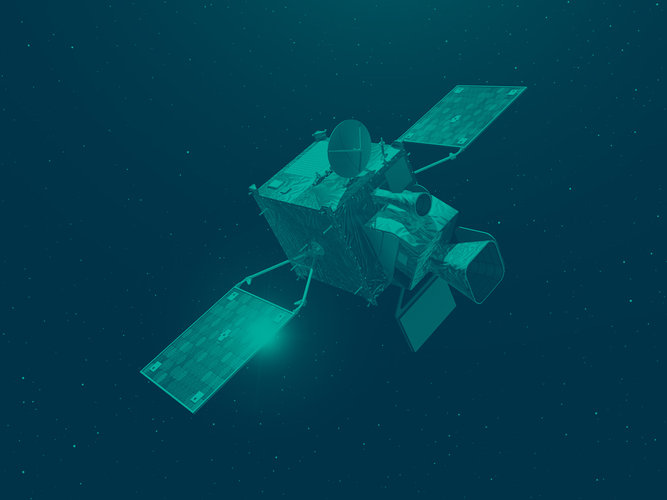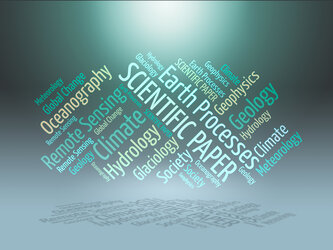Earth observation supports latest UN climate report
The final instalment of the sixth assessment report by the United Nations' Intergovernmental Panel on Climate Change (IPCC) has been released today. The report warns that the planet has already warmed 1.1°C above pre-industrial levels, resulting in more frequent and intense extreme weather events that are causing increasingly dangerous impacts on nature and people in every region of the world.
The report includes a greater contribution of Earth observation data than its previous iterations in providing the physical evidence of Earth’s changing climate system – from sea-level rise, growing greenhouse-gas emissions and melting sea ice.
The Synthesis Report draws together the key findings of six reports released during its Sixth Assessment Cycle and provides a comprehensive review of global knowledge of the climate.
Previous reports highlighted the challenge to keep warming to 1.5°C, yet five years later, the challenge has become even greater owing to increasing greenhouse-gas emissions. The current pace and scale of what has been done, as well as current plans, are insufficient to tackle climate change.
More frequent and more intense extreme weather events are having increasingly dangerous effects on nature and on people in every region of the world. More heatwaves, heavier rainfall and other weather extremes further increase risks to human health and ecosystems. To avoid the worst consequences, the global community has been called upon to cut emissions by almost half by 2030.
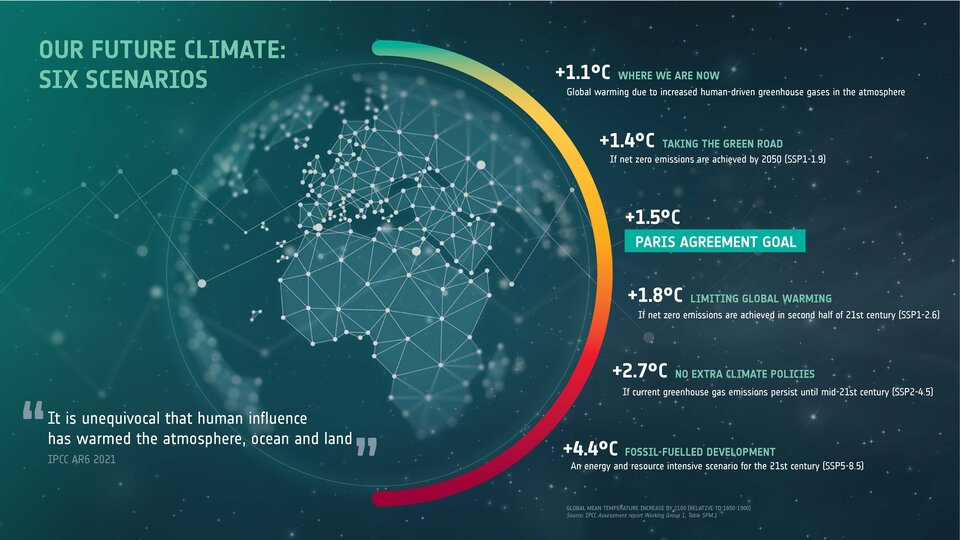
Clear way forward
The report stresses the need for urgent climate action to secure a liveable future for us all. There are multiple, feasible and effective options to reduce greenhouse gas emissions and adapt to human-caused climate change, which are available now.
The report states that solutions lie in climate resilient development. This involves integrating measures to adapt to climate change with actions to reduce or avoid greenhouse-gas emissions in ways that provide wider benefits to advance sustainable development for all.
Political commitment, coordinated policies, international cooperation and inclusive governance are all important for effective and equitable climate action.
Our climate, ecosystems and society are all interconnected. Effective and equitable conservation of around 30-50% of Earth’s land, freshwater and ocean will help ensure a healthy planet.
Support from satellites
Satellite observations have formed an integrative part of the evidence-based assessment of climate change impacts on land, freshwater, ocean, coastal, mountain and polar systems, particularly over areas where in situ measurements are unavailable.
The role of Earth observation has evolved to support national entities and stakeholders to build resilience and work towards their net zero commitments.
Simonetta Cheli, Director of Earth Observation Programmes, says, “Climate records have shown us that the window to act is closing: melting glaciers, recent droughts and floods in Europe, as well as more extreme weather events, are all telling us that it's time to act now.
“Our role, as ESA, is to provide world leaders and policymakers with the climate data, space applications and solutions so that we achieve carbon neutrality in time for our planet to thrive again.”
ESA contributes, particularly through its Climate Change Initiative (CCI), long-term satellite observation datasets that act as key lines of physical evidence in the latest state-of-the-art assessment.
ESA’s efforts in supporting evidence to assess the climate have increased. Since the previous assessment cycle, there has been a threefold increase in the number of papers contributing to the report – with 150 papers generated by the CCI cited over 400 times. Over 30 researchers working on this ESA initiative also contributed directly to the report as lead or contributing authors or expert reviewers.
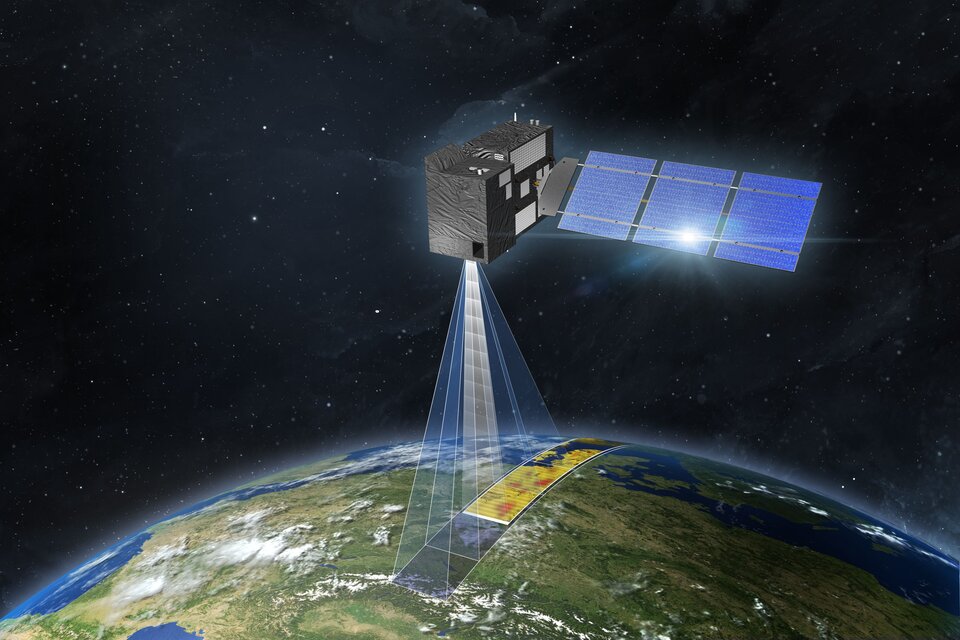
Greenhouse gas emissions
Limiting human-caused global warming requires deep reductions in carbon dioxide, methane and other greenhouse gas emissions. Net zero greenhouse emissions, if sustained, are projected to result in a gradual decline in global surface temperatures.
Satellite data are fundamental to ensuring we have a clearer picture of the emissions from human activity that cause climate change. The Copernicus Anthropogenic Carbon Dioxide mission (CO2M) is being designed to measure just that. Specifically, the mission will be the first to measure anthropogenic carbon dioxide in the atmosphere.
Meanwhile, scientists have already devised new ways of comparing and checking national greenhouse gas inventories against independent satellite observations.
Extreme events
Evidence of observed changes in extremes such as heatwaves, heavy precipitation, droughts, and tropical cyclones, and, in particular, their attribution to human influence, has further strengthened since the IPCC’s Fifth Assessment Report in 2014. Human influence has likely increased the chance of compound extreme events since the 1950s, including increases in the frequency of concurrent heatwaves and droughts.
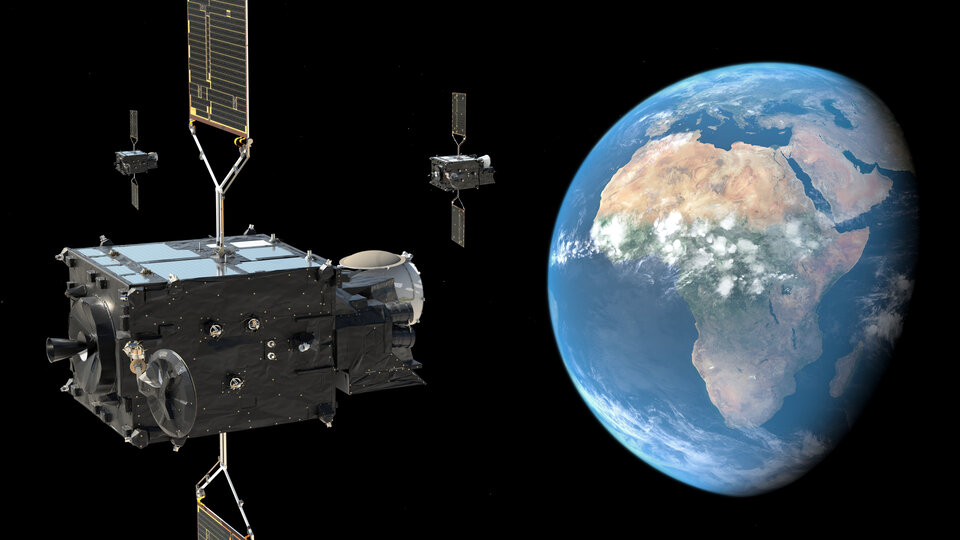
Extreme events will pose a serious threat to the livelihood and stability of many nations around the globe in the coming years, particularly those in more vulnerable communities.
The recently-launched Meteosat Third Generation satellites will predict how fast developing and highly dangerous weather events will evolve – helping save lives. This will be done via ‘nowcasting’, which refers to the quasi-real-time monitoring and prediction of severe storms as they develop and evolve.
Sea-level rise
According to the report, since 1901, global mean sea level has increased by 20 cm, with the average rate of increase accelerating to a high of 3.7 mm per year since 2006.
Sea-level rise is unavoidable for centuries to millennia due to continuing ocean warming and ice sheet melt, and sea levels will remain elevated for thousands of years. However, deep, rapid and sustained reductions in greenhouse gas emissions would limit further sea level rise acceleration and projected long-term sea level rise commitment.
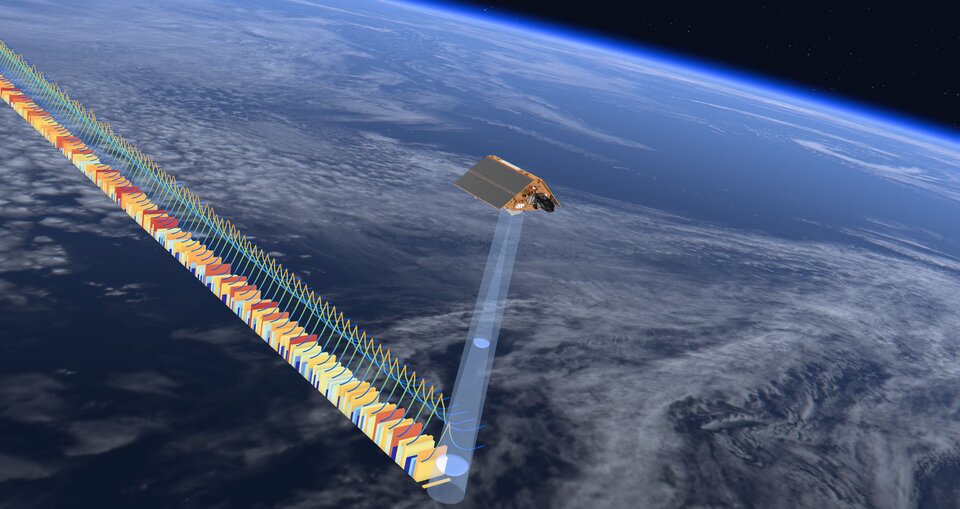
Satellite altimetry techniques provide a precise measurement of sea-level change. In 2020, the Copernicus Sentinel-6 Michael Freilich satellite was launched into orbit and using the latest radar altimetry technology, can measure tiny differences in the height of the sea surface from space.
The mission is now delivering the world’s most accurate data on the changing height of the sea surface.
Accelerating action
Earth observation data have been essential for the compilation of the IPCC reports and will be fundamental for the UN Global Stocktakes of 2023 and 2028. Beyond this, the use of space assets and technologies have untapped potential to be integrated and developed into more space solutions for fields such as energy, agriculture and city planning.
More action is needed to leverage and build upon existing and planned activities to maximise impact and to urgently deploy solutions. ESA’s Space for a Green Future Accelerator is a direct response to the global climate and environmental crisis, in support of a sustainable Green Transition towards a carbon-neutral, resource-efficient and resilient society.
Working in synergy with ESA’s key partners, the accelerator will deliver actionable information, assess scenarios for policy implementation, and offer tailored services to reach carbon neutrality by 2050.

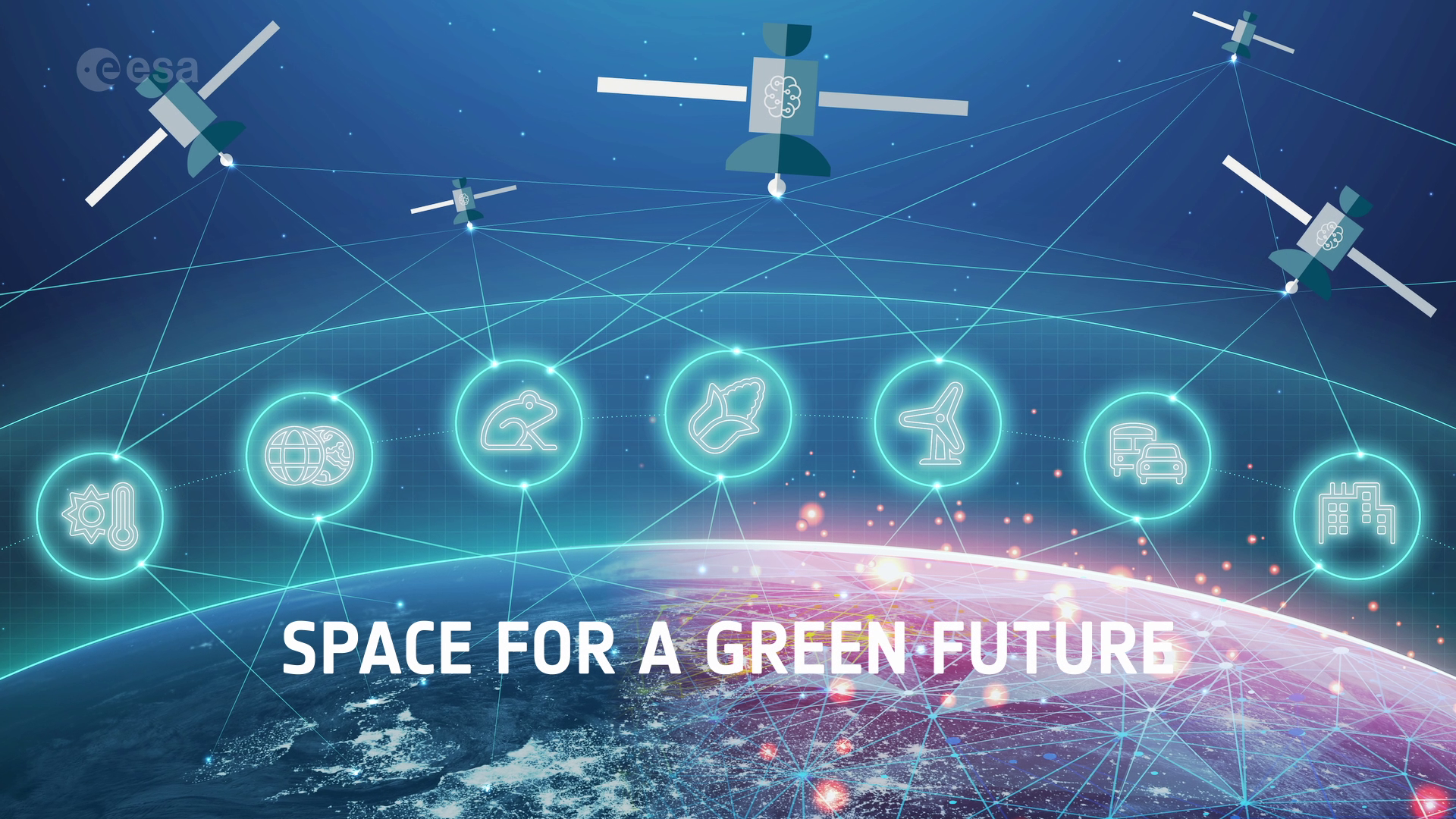
Access the video


